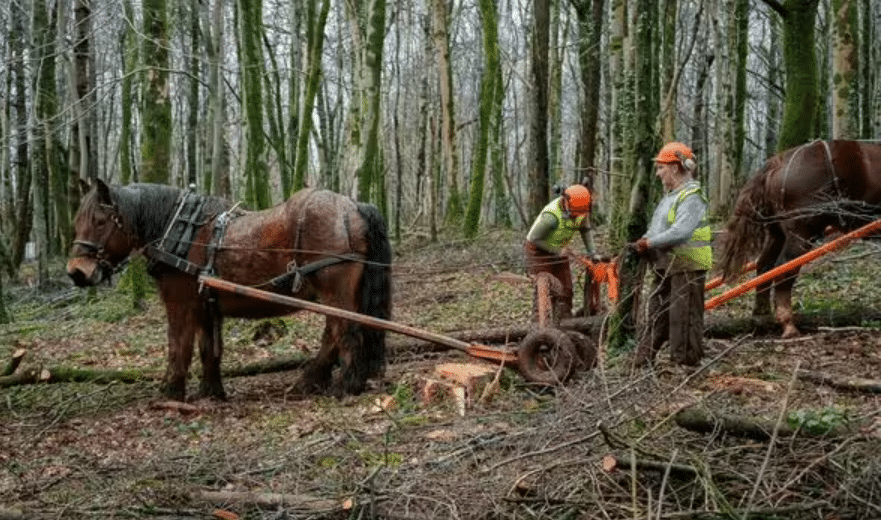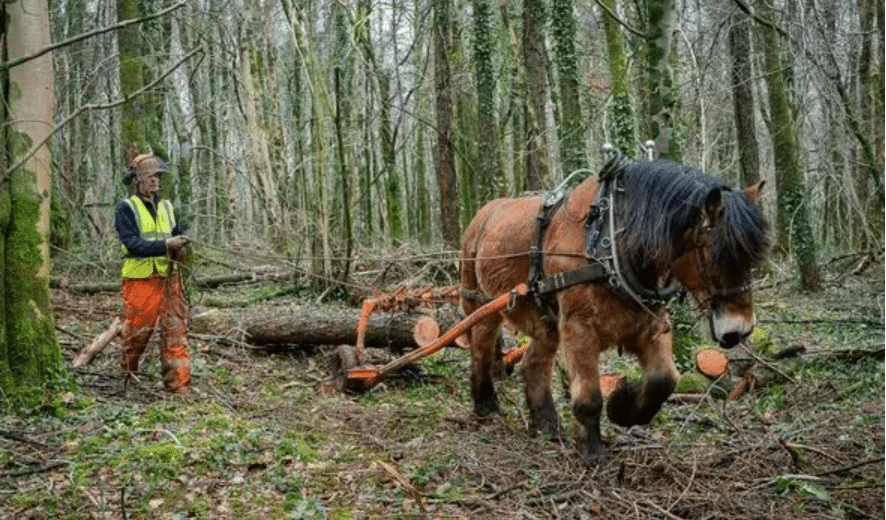Horses are now replacing machines to clear infected trees from a British forest, according to National Resources Wales, which is turning back the clock and using animals rather than complicated machinery.
Known as “horse logging”, forest harvesters use trained horses to thin an area of sensitive woodland in Fforest Fawr near Tongwynlais, on the outskirts of Cardiff.
The practice, which predates the Roman times, is an ancient and sustainable forest management technique used for thousands of years.
It uses horses to pull timber from felling areas without needing large machines and with minimal damage to the ground and other plants.
The work will last three months to stop the spread of phytophthora ramorum, commonly known as larch disease, whilst other tree species in the affected area will not be felled.

According to Chris Rees, the forest operations team leader for Natural Resources Wales, “Horse logging has been around for thousands of years and is still a viable and sustainable method of extracting timber in modern-day forest operations.
“Using horses rather than machines in environmentally sensitive areas gives us a low impact and sympathetic solution, particularly for managing important ancient woodlands and archeologic sites,” he said.
“We used horses in other South Wales Central woodlands last year, and we’re looking forward to keeping this wonderful tradition alive in Fforest Fawr.”
The area of operations, 4.7 hectares, is not entirely larch, the rest being native broadleaved species that will not be felled.
Precision felling and timber extraction are required to minimise damage to the surrounding broadleaved trees and other important archaeological features.
The thinning of the larch will also allow the broadleaf canopy to increase.
As a Planted Ancient Woodland Sites (PAWS) woodland, this work will help to restore and improve its ecological potential.
Horses, horse boxes, welfare provisions and associated equipment will be kept on-site for the work while the Fforest Fawr car park will remain open. Visitors to the woodland are asked to adhere to any safety signs or diversions and to keep dogs on lead.
- The article has been edited and was originally published in the Daily Express.






